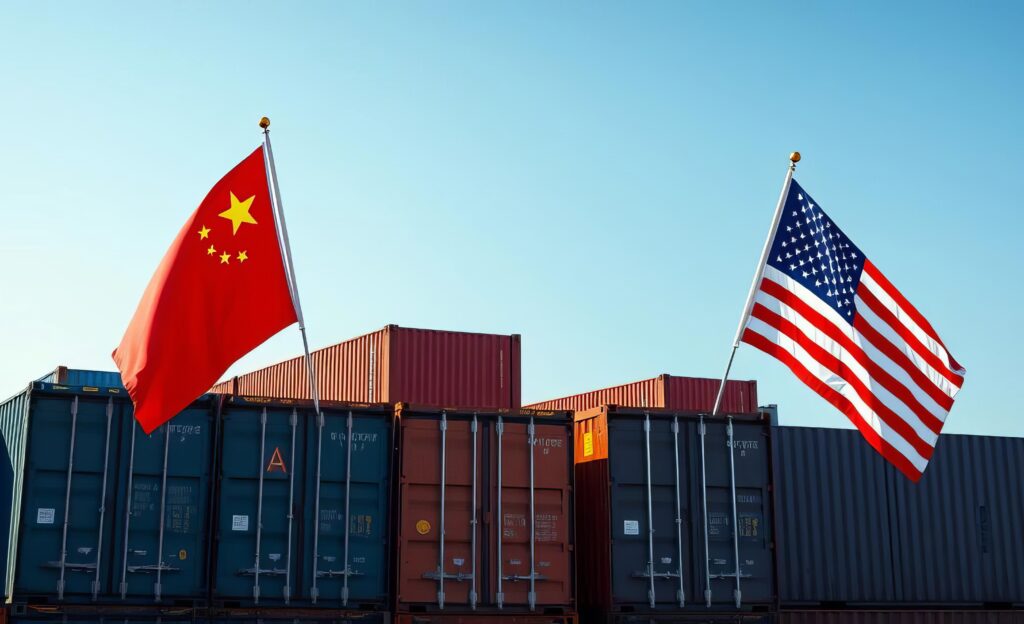Nearshore News: Legal Workarounds to Tariffs, Mexico’s Nearshoring Investment Surge, and Lessons from China’s Manufacturing Dominance

At the midpoint of Trump’s 90-day tariff pause, global negotiations remain largely unresolved, with only one partial trade deal (with the UK) announced. Amid stalled negotiations, businesses aren’t waiting: some are turning to legal workarounds to reduce costs, others are doubling down on Mexico as a strategic hub. At the same time, China is intensifying its industrial ambitions, prompting fresh questions about how global supply chains will evolve in an era of persistent trade friction and technological competition.
Summary:
- Halfway through Trump’s 90-day tariff pause, only one partial trade deal (with the UK) has been announced, while negotiations with other key trading partners remain unresolved (Business Insider)
- Despite global uncertainty, foreign direct investment (FDI) in Mexico hit a record high in Q1 2025, signaling continued confidence in its role as a nearshoring hub (Mexico News Daily)
- Companies are increasingly turning to a legal workaround called the “first sale rule” to reduce import tariffs (CNBC)
- China’s industrial policy has made it a manufacturing powerhouse—and it’s doubling down on next-gen tech like AI and humanoid robots (Financial Times)
It's now the halfway point of Trump's 'reciprocal tariffs' pause. Here's what world leaders have said about negotiations.
Published: May 27, 2025
Source: Business Insider
At the halfway point of President Trump’s 90-day tariff pause, only one partial trade deal—with the UK—has been announced, while negotiations with other key trading partners remain unresolved. The U.S. maintains a 10% blanket tariff and is in ongoing discussions with countries like the EU, China, Japan, and Canada.
Key points:
- Limited Progress at Midpoint of Tariff Pause: Halfway through the 90-day pause on additional tariffs for 75 countries, the only trade deal announced is with the UK, and the 10% baseline tariff remains in place.
- EU Talks Accelerated but Complex: After a postponed 50% tariff, the EU and U.S. agreed to fast-track trade negotiations, with EU leaders emphasizing the complexity and importance of the transatlantic economic relationship.
- Mixed Global Reactions: Leaders from Canada, Spain, Germany, and Australia criticized Trump’s tariffs as unjustified and harmful, while countries like Japan and Mexico took a more measured approach to maintain diplomatic engagement.
- China Resists Under Pressure: China accused the U.S. of double-dealing and coercion, stating that trust cannot be built unless unilateral tariffs are first corrected.
- Domestic and Diplomatic Pressure on Trump: Despite insisting that foreign governments must initiate deals, Trump faces mounting pressure to secure meaningful agreements before the tariff pause ends on July 7.
Nearshoring lives on: Despite economic uncertainty, the flow of fresh capital into Mexico is on the rise
Published: May 26, 2025
Source: Mexico News Daily
Despite global uncertainty, foreign direct investment (FDI) in Mexico hit a record high of $21.37 billion in Q1 2025. Encouragingly, new investment rose 165% year-over-year, signaling renewed interest amid the nearshoring trend. The manufacturing sector led the way, and Mexico City captured over half of all investment.
Key points:
- Record-High FDI, but Modest New Investment Share: Mexico attracted $21.37B in FDI in Q1 2025; new investment surged 165% but still made up just 7.4% of the total.
- Manufacturing Leads FDI Inflows: The manufacturing sector drew $9.2B—43% of total FDI—boosted by trends in electric vehicles, electronics, and energy.
- Geographic Concentration: Over 80% of FDI went to just five states, with Mexico City alone receiving 55% of total investment.
- U.S. Still #1, But Losing Share: The U.S. contributed 38.7% of FDI, down from 52% last year; Spain, the Netherlands, Australia, and Germany followed.
- Reinvestment Still Dominates: Reinvestment of profits made up 77.9% of total FDI, reflecting continued confidence from existing foreign firms despite economic and political challenges.
Businesses are finding a workaround for tariffs — and it’s entirely legal
Published: May 26, 2025
Source: CNBC
Companies are increasingly turning to a legal workaround called the “first sale rule” to reduce import duties. This decades-old rule allows importers to calculate tariffs based on the original factory price—not the marked-up intermediary price—resulting in significant cost savings. Though it requires transparency and documentation, industries with high-margin goods like fashion and biotech are finding the method especially valuable.
Key points:
- What is the First Sale Rule? U.S. customs law allows importers to base tariffs on the original sale price between the manufacturer and the first buyer, not the final U.S. sale price—lowering the duty owed.
- Renewed Interest Due to Tariffs: Interest surged during Trump’s first tariff wave in 2018 and is growing again amid his current tariff regime.
- Legal and Conditional Use: To apply the rule, businesses must prove multiple arms-length sales, clear U.S. destination intent, and secure documentation—often a challenge with intermediaries.
- Adoption Across Industries: Companies like Moncler, Kuros Biosciences, Traeger, and Fictiv are now publicly citing the first sale rule as a cost-saving strategy.
- Cost Savings vs. Tariff Goals: While the rule is entirely legal, its growing use may undermine U.S. efforts to increase tariff revenues and promote domestic manufacturing.
The lessons from China’s dominance in manufacturing
Published: May 28, 2025
Source: Financial Times
China’s Made in China 2025 industrial policy has transformed the country into a global manufacturing powerhouse, emphasizing automation, technological self-sufficiency, and strategic state support. Beijing is doubling down on industrial policy with new initiatives targeting next-generation technologies like AI and humanoid robots, prompting other nations to reassess their own strategies amid rising concerns over fair competition.
Key points:
- China’s Manufacturing Transformation: Made in China 2025 propelled Chinese manufacturing from labor-intensive to tech-driven, with state-backed automation, subsidies, and aggressive support for sectors like robotics, EVs, and aerospace.
- Global Trade Tensions Intensify: China’s market-share goals and state support for key industries strained relations with the U.S. and EU, fueling tariffs, accusations of unfair practices, and calls for protectionist responses worldwide.
- Mixed Sectoral Success: While China leads in electric vehicles and rail equipment, it still lags in high-end aerospace and semiconductors. State-backed overcapacity has also created inefficiencies and “colossal” industrial waste.
- Private Sector & Foreign Firms Played Key Roles: Private Chinese firms drove much of the innovation, while foreign companies—often required to transfer technology—enabled local capacity building, paradoxically aiding China’s self-sufficiency goals.
- China Doubles Down with Tech-Focused Industrial Policy: Xi Jinping’s push for “new quality productive forces” includes a new $137B fund for humanoid robots and AI. Despite fiscal strains and economic risks, China is accelerating its bid to dominate future tech sectors.
More blogs


